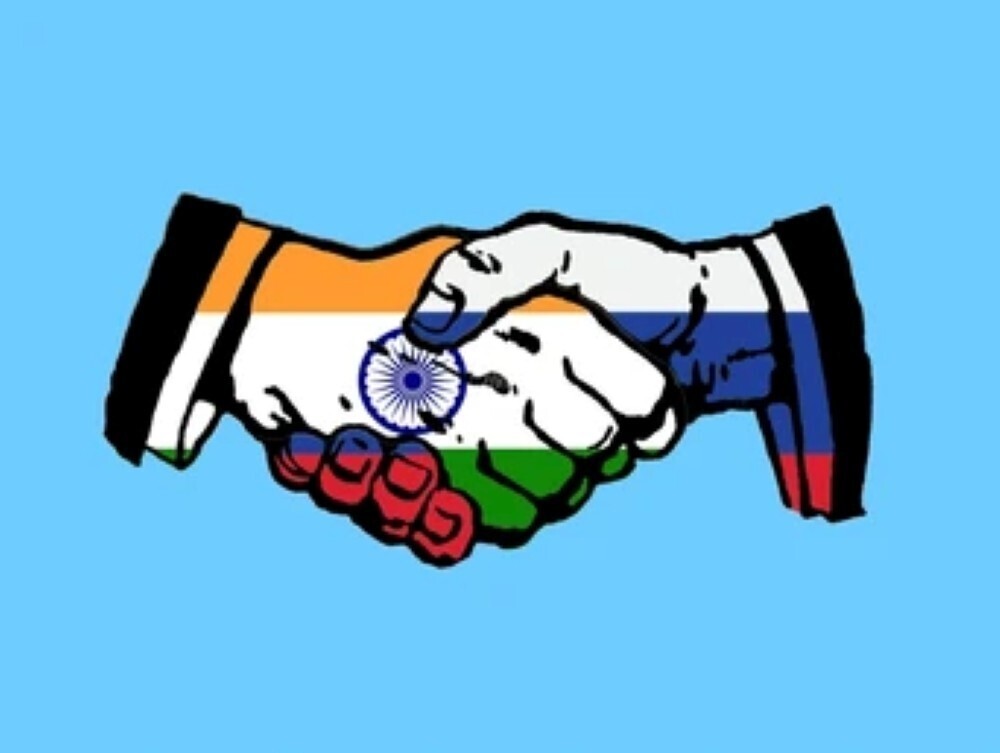您想继续阅读英文文章还
是切换到中文?
是切换到中文?

THINK ALUMINIUM THINK AL CIRCLE

A new protocol has been signed between India and Russia with the sole aim of deepening the industrial cooperation concerning aluminium, railways and the mining sector.

At the 11th session of the India-Russia Working Group on Modernisation and Industrial Cooperation, both nations reaffirmed their commitment to strengthening bilateral collaboration across key sectors. Discussions highlighted increased engagement in aluminium, fertilisers and railway transport, along with mutual focus on capacity building and technology transfer in mining equipment, exploration and industrial and domestic waste management.
As per the Ministry of Commerce and Industry, the discussion between the two countries was conducted under the framework of the India-Russia Intergovernmental Commission on Trade, Economic, Scientific, Technological and Cultural Cooperation. The meeting was held on Wednesday, August 6, 2025, at Vanijya Bhawan in New Delhi.
The meeting served as a review of developments since the 10th session and facilitated strategic dialogue to advance cooperation across critical sectors. Deliberations included updates from dedicated sub-groups on modernisation, mining, fertilisers and railway transport, while also identifying new areas for potential collaboration.
Also read: Rusal agrees to acquire 26% stake in an Indian alumina refinery
Key discussion area
Key focus areas of the discussions included collaborative initiatives in aerospace science and technology, such as the establishment of a modern wind tunnel facility, production of small aircraft piston engines and joint development in carbon fibre technology, additive manufacturing and 3D printing. The two sides also examined opportunities for cooperation in rare earth and critical mineral extraction, underground coal gasification and the development of modern industrial infrastructure.
Close to 80 delegates from both sides engaged in discussions on collaborative opportunities across sectors such as aerospace, rare earths, additive manufacturing and waste management. The talks come amid growing geopolitical shifts, with the US reportedly weighing new tariffs on Indian exports due to India's deepening trade ties with Russia, particularly in energy and its increasing involvement in blocs like BRICS.
The discussions around rare earth minerals gain significance in light of China's recent export restrictions on seven key rare earth elements, which have disrupted automobile production in India. China currently commands a dominant position in the global rare earths market, meeting approximately 85 to 95 per cent of global demand.
The Ministry of Commerce and Industry stated, "Both sides explored opportunities in rare earth and critical mineral extraction, underground coal gasification, and the creation of modern industrial infrastructure."
Trump's tariff imposition on India
Trump imposed a 50 per cent punitive tariff on Indian exports, citing India's growing trade engagement with Russia, which remains under Western sanctions due to its ongoing conflict with Ukraine. Since the onset of the Ukraine crisis in 2022, India has substantially increased its crude oil imports from Russia, which now constitute over one-third of its total oil imports.
Also read: Energy cold war? Energy sanctions, BRICS resistance — a fracture in the global power grid
The newly imposed tariffs have heightened pressure on India, especially as key competitors like Vietnam, Bangladesh and China continue to benefit from lower US tariff rates ranging between 19 per cent and 30 per cent. However, India retains a competitive edge through its exports in exempted categories such as pharmaceuticals and electronics, which collectively represent nearly half of its total annual goods exports valued at USD 80 billion.
China's import from Russia
According to New Delhi-based think tank Global Trade Research Initiative (GTRI), China imported USD 62.6 billion worth of Russian oil in 2024, surpassing India's USD 52.7 billion. GTRI noted that Washington has refrained from imposing similar measures on Beijing, owing to China's strategic control over critical materials like gallium, germanium, rare earths and graphite, which are essential to the US defence and technology sectors.
Concluding statement
The session concluded with the signing of the Protocol of the 11th Session by both co-chairs, underscoring the strategic India-Russia partnership and a shared commitment to advancing industrial and economic cooperation. It was co-chaired by Amardeep Singh Bhatia, Secretary, Department for Promotion of Industry and Internal Trade (DPIIT), representing the Indian side and Alexey Gruzdev, Deputy Minister of Industry and Trade of the Russian Federation, representing the Russian side.
Also read: India exports aluminium to Russia, RIA Novosti reports
Note: To feature your brand and share insights, contribute an article or interview in our forthcoming e-magazine "American ALuminium Industry: The Path Forward."
Responses








